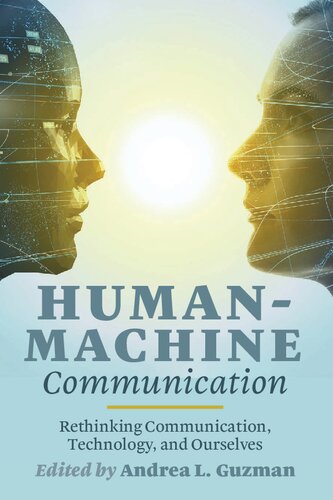

Most ebook files are in PDF format, so you can easily read them using various software such as Foxit Reader or directly on the Google Chrome browser.
Some ebook files are released by publishers in other formats such as .awz, .mobi, .epub, .fb2, etc. You may need to install specific software to read these formats on mobile/PC, such as Calibre.
Please read the tutorial at this link: https://ebookbell.com/faq
We offer FREE conversion to the popular formats you request; however, this may take some time. Therefore, right after payment, please email us, and we will try to provide the service as quickly as possible.
For some exceptional file formats or broken links (if any), please refrain from opening any disputes. Instead, email us first, and we will try to assist within a maximum of 6 hours.
EbookBell Team

5.0
28 reviewsFrom virtual assistants to social robots, people are increasingly interacting with intelligent and highly communicative technologies throughout their daily lives. This shift from communicating with people to communicating with people and machines challenges how scholars have theorized and studied communication. Human-Machine Communication: Rethinking Communication, Technology, and Ourselves addresses this transition in how people communicate and who, or what, they communicate with and the implications of this evolution for communication research. Geared toward scholars interested in people’s interactions with technology, this book serves as an introduction to human-machine communication (HMC) as a specific area of study within communication (encompassing human-computer interaction, human-robot interaction, and human-agent interaction) and to the research possibilities of HMC. This collection includes papers presented as part of a scholarly conference on HMC, along with invited works from noted researchers. Topics include defining HMC, theoretical approaches to HMC, applications of HMC, and the larger implications of HMC for self and society. The research presented here focuses on people’s interactions with multiple technologies (artificial intelligence, algorithms, and robots) used within different contexts (home, workplace, education, journalism, and healthcare) from a variety of epistemological and methodological approaches (empirical, rhetorical, and critical/cultural). Overall, Human-Machine Communication provides readers with an understanding of HMC in a way that supports and promotes further scholarly inquiry in a growing area of communication research.